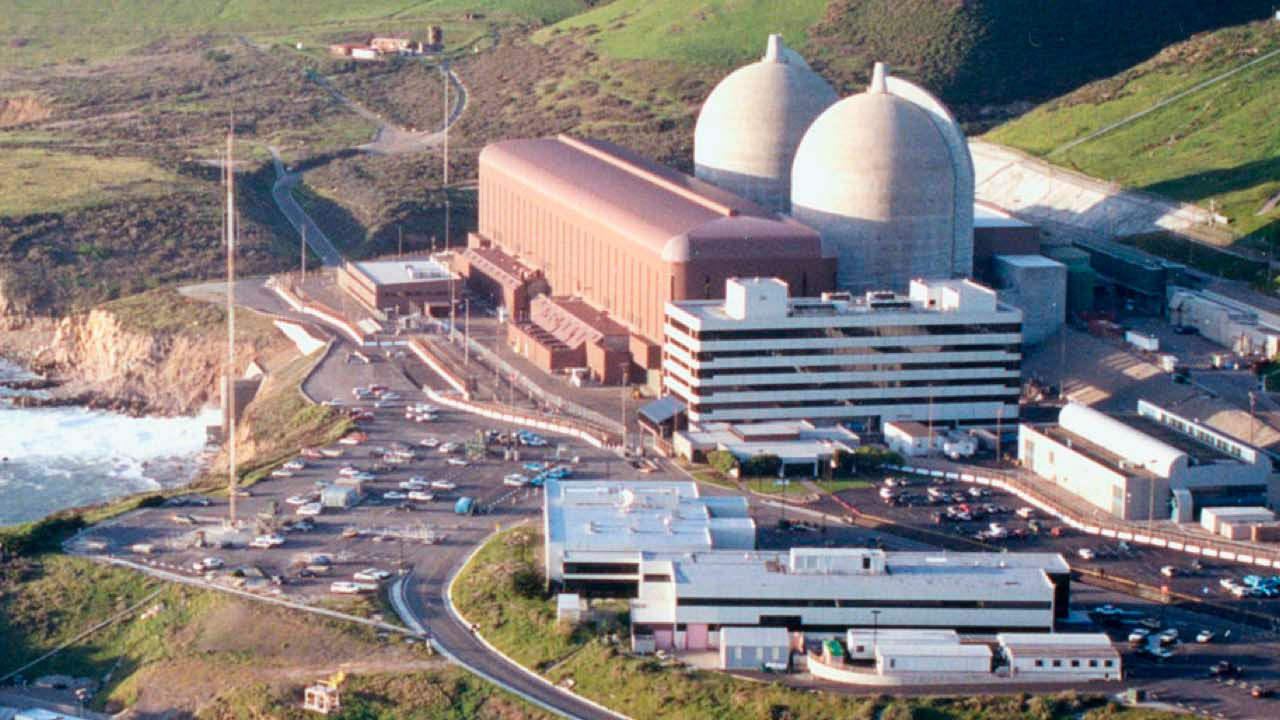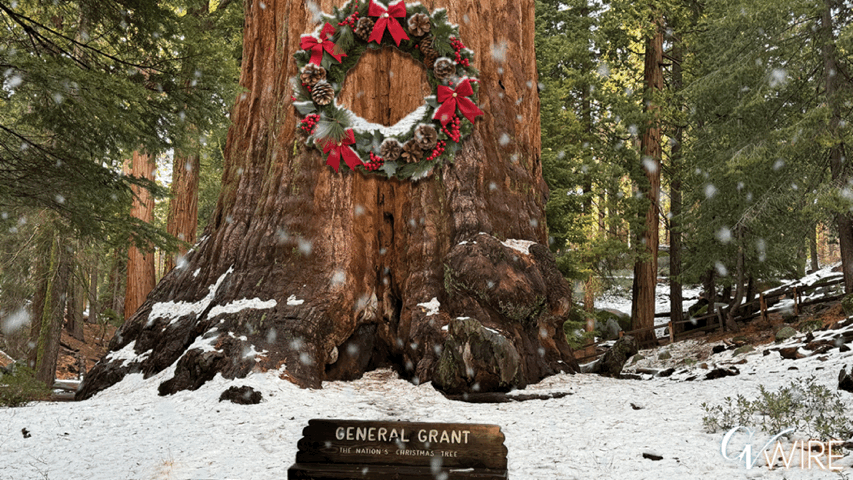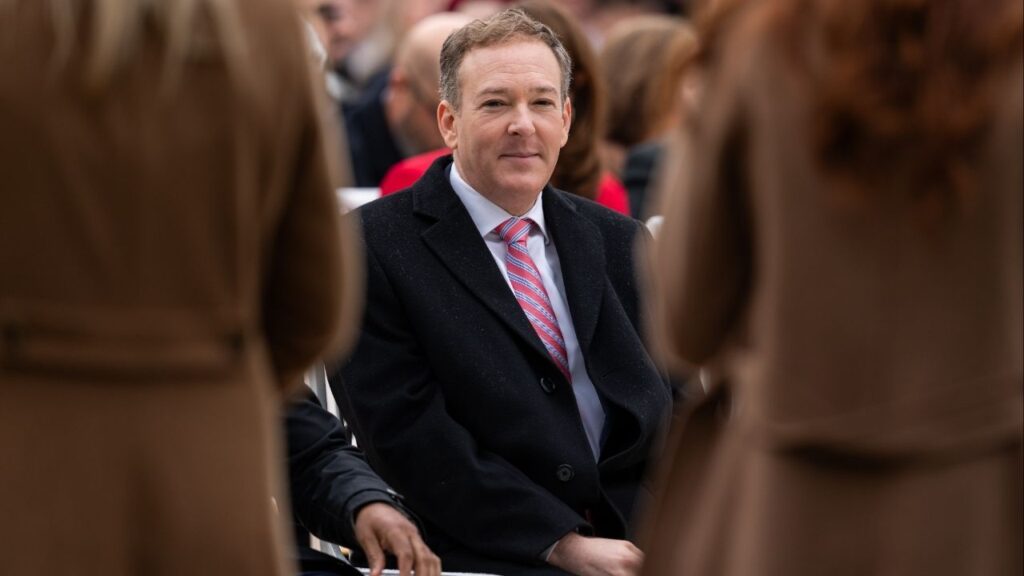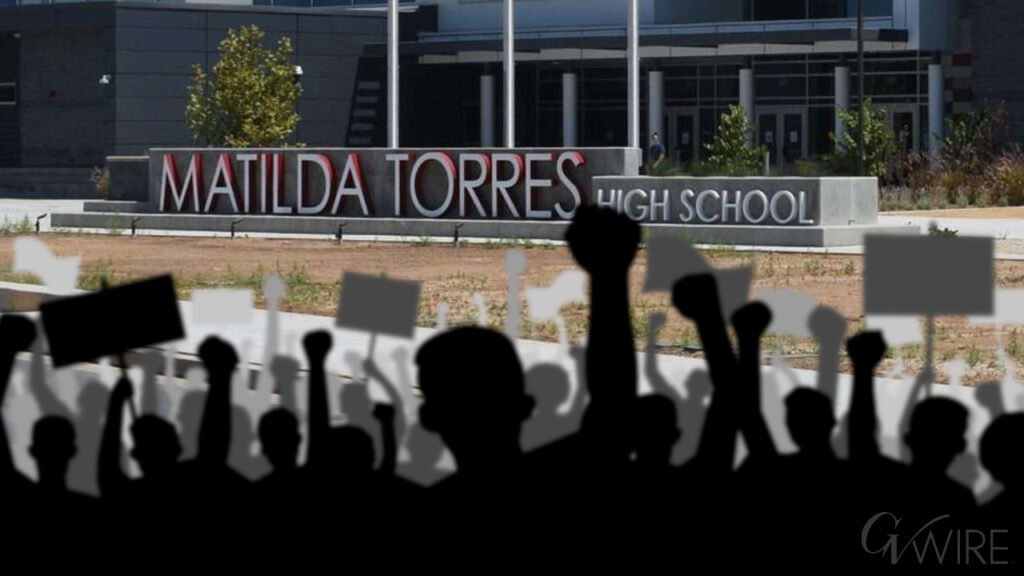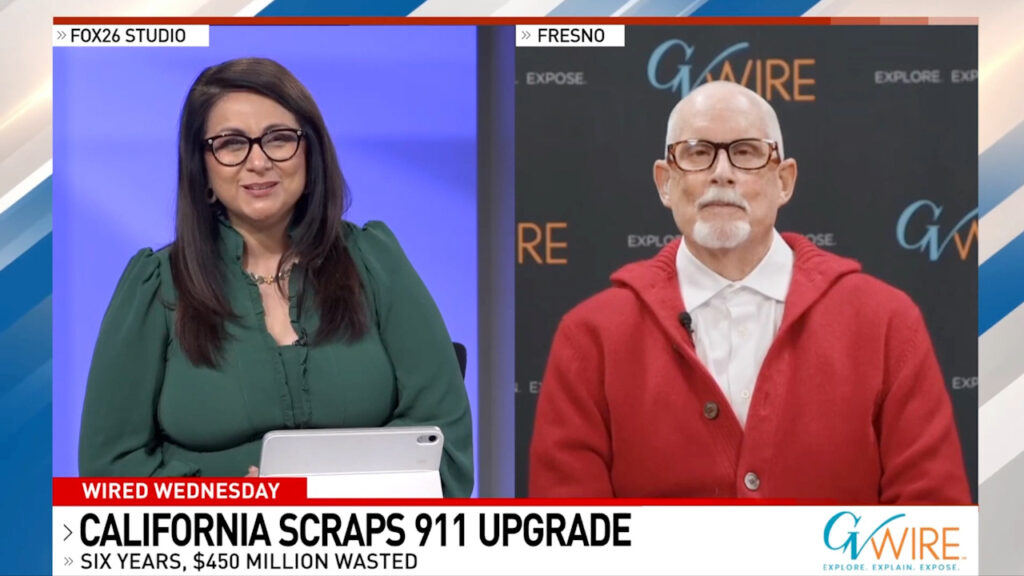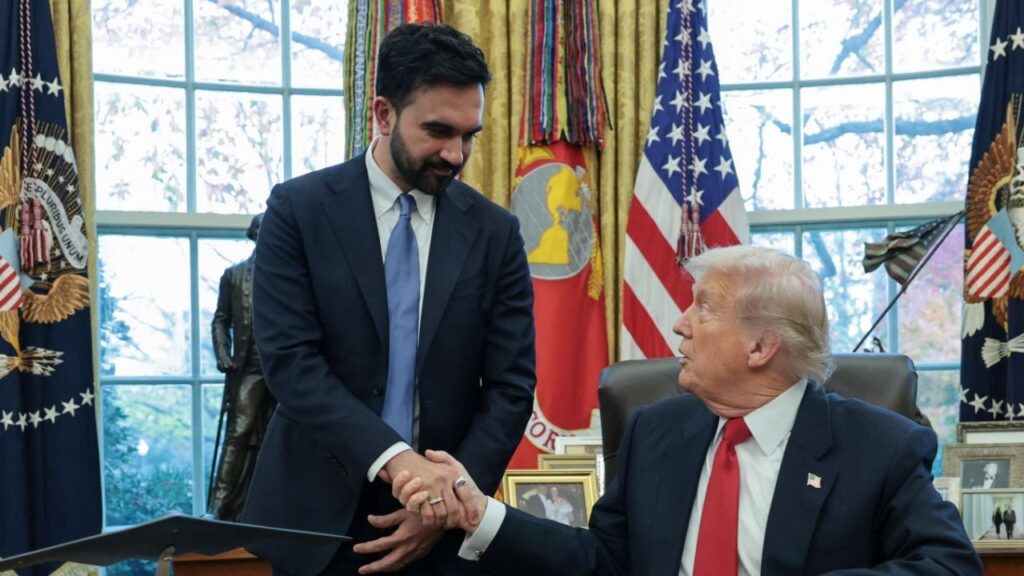Despite promises from Newsom’s administration and legislators at the time, CalMatters has found the state may be required to forgive as much as $588 million, about 42% of the loan of the $1.4 billion loan to keep the Diablo Canyon nuclear plant open. (PG&E)

- Despite promises otherwise from state leaders, California may have to forgive as much as $588 million of a loan to keep Diablo Canyon open.
- “It’s not a loan. It's a gift," says Matthew Freedman, lawyer for The Utility Reform Network.
- San Diego Assemblymember Tasha Boerner, who voted against the 2022 legislation, says, “It’s another thing that undermines public trust.”
Share
|
Getting your Trinity Audio player ready...
|
This story was originally published by CalMatters. Sign up for their newsletters.
Two weeks before the 2022 legislative session ended, Gov. Gavin Newsom’s administration came to lawmakers with a big ask: authorize a $1.4 billion state loan to keep open California’s last nuclear power plant, Diablo Canyon. The money was supposed to be a stopgap that would be fully repaid by an expected federal award. There was even a fail-safe: if the award fell short, other federal funds or profits from Diablo Canyon’s final year could cover the difference.
The bill passed.
Despite promises from Newsom’s administration and legislators at the time, CalMatters found the state may be required to forgive as much as $588 million, about 42% of the loan.
That’s partly because the maximum available federal award would never have covered the full loan. PG&E applied for even less than was available because an incentive fee allowed under the 2022 law isn’t eligible for federal reimbursement.
One source of funding that could make up the difference—profit from the plant—is, by PG&E projections, unlikely to materialize. The only other avenue the state is considering—using federal money for nuclear waste storage—would cover a fraction of the shortfall and may not be legal.
And the total is still mounting: PG&E said in a January filing that it expects its costs for the plant to exceed the state’s loan.
The shortfall is emerging at a time when the state’s general fund is already facing a $12 billion budget hole, and advocates, lawmakers and regulators have raised concerns about portions of the loan benefiting PG&E shareholders, which the law forbids.
“It’s not a loan,” Matthew Freedman, lawyer for The Utility Reform Network, said. “It’s a gift.”
Diablo Canyon’s Expensive New Lease on Life
Diablo Canyon is currently slated to stay open until 2030, five years after it was originally scheduled to shut down for economic reasons. The lifespan extension is meant to provide energy stability while California transitions to all-renewable sources by 2045. About 8% of California’s total energy comes from the San Luis Obispo County plant, as well as 17% of its carbon-free energy.
“It’s not a loan. It’s a gift.”
Matthew Freedman, lawyer, The Utility Reform Network, on California state loan of $1.4 billion to PG&E to keep the Diablo Canyon nuclear power plant operating
Newsom’s administration and other proponents of the loan said it would be paid back fully with funding from the U.S. Department of Energy’s “Civil Nuclear Credit” program, an initiative by former President Joe Biden aimed at keeping open financially ailing nuclear power plants.
Ana Matosantos, Newsom’s cabinet secretary at the time, testified before the state Assembly in August 2022 that the administration believed the funding “will offset the entirety of the loan.” Santa Cruz Democratic Sen. John Laird, a key vote to pass the bill, echoed this in a statement:
“The $1.4 billion loan expenditure will be matched with $1.4 billion in federal revenue, which limits the requirement of any ratepayer or taxpayer money for that purpose,” he said in September that year.

Federal Grant Rules Are Barriers
But the federal award couldn’t have covered the full loan, CalMatters found. By law, the Department of Energy can only award $1.2 billion each cycle – $200 million less than the general fund loan. And after the bill passed, PG&E applied for even less – $1.1 billion.
The gulf of $300 million between the state loan and Department of Energy funds is money allowed under the 2022 law that rewards PG&E for keeping the plant online. The fee is not eligible for reimbursement under the Department of Energy nuclear credit program since it does not go into the cost of running the plant.
The Department of Energy eventually approved the funding, but that doesn’t mean the state will get the full $1.1 billion. It is made up of a base award of $741.4 million and can go up to $1.1 billion if certain conditions are met by the end of 2026. Those conditions include expenses from unexpected outages, emergencies or new and unanticipated compliance requirements by the end of 2026, according to its agreement with the Department of Energy.
Todd Allen, chair of the University of Michigan’s department of nuclear engineering and radiological sciences, said that the latter two conditions – emergencies and new compliance requirements – are unlikely. Emergencies are rare, and new compliance requirements are uncommon. More likely, he said, are unexpected outages. But those have been relatively uncommon at the plant – Diablo Canyon has had five unexpected outages in the past 10 years, the most recent in March 2024, according to reports filed with the U.S. Nuclear Regulatory Commission. PG&E said it does not currently anticipate any unexpected outages.
“I would expect, if I was asked to bet on this, that the government payoff would be closer to the lower number,” said Allen.
DWR: We Don’t Know How Much Will Be Repaid
The California Department of Water Resources was assigned to disburse the loan to PG&E and ensure that the funds were used for authorized costs. In a February report to the Legislature, the water agency said it expected at least the guaranteed amount of the federal funding to be used to repay the loan, but “at this point DWR is not able to forecast how much of the loan will be repaid.” It won’t know for sure until the Department of Energy begins to release the money in coming years.
One way the shortfall could be made up, according to the loan agreement, is through profit from the plant in its final year of operation – November 2029 to November 2030. The 2022 law defines this as “market revenues exceeding costs and expenses.” But PG&E doesn’t currently expect to have money to spare from the plant during that period. In its most recent projections, the company anticipates that its costs for Diablo Canyon will exceed the revenue from selling its energy on the wholesale market, leaving customers with a requirement to pay the difference.
PG&E spokesperson Jennifer Robison did not directly answer questions about the plant’s projected financial performance. Instead, she said the plant would “provide an annual $540 million net cost benefit,” in large part through its resource adequacy contribution, a state requirement that each utility be able to generate enough energy to meet customer demand.
In other words, Diablo Canyon could help state utilities avoid running out of power and having to buy it at higher prices, saving them hundreds of millions of dollars. Robison declined to answer further questions about this, including whether that benefit could be used to pay off the loan, and if so how much of it.
The California Public Utilities Commission, PG&E’s regulator, said the resource adequacy figure PG&E referenced is not part of the cost of running the plant, thus is not included in profit calculations. It is “more accurately described,” commission spokesperson Adam Cranfill said, as “an avoided cost.”
The other possible source for repayment is unspecified federal funds, which the law said PG&E is required to “take all necessary steps to secure.” The water department’s February projections said the most likely source for this is payment PG&E expects to receive for storing spent nuclear fuel. Because the federal government did not build a promised national repository for the fuel, the Department of Energy pays to have it stored elsewhere until a national facility is built. PG&E expects to receive about $63 million from this from 2026 to 2030.
These funds, however, have historically been used to offset ratepayer costs. The 2022 law authorizing the state loan to PG&E specifies that “ratepayer funds shall not otherwise be used in any manner to repay the loan.” When asked how using these funds for the loan fits within the law, water department spokesperson Ryan Endean said the spent fuel money isn’t accounted for in any other ratemaking processes. Experts CalMatters reached out to were divided on whether these funds would count as ratepayer funds. Should they be allowed, they alone would not be enough to cover the difference between the state’s loan and the federal award.
Aggrieved Legislators and ‘No Leverage Left’ Over PG&E
PG&E did not answer CalMatters’ questions about what other federal funds it is pursuing to repay the loan. When describing how the loan could be paid back, Robison omitted other federal funds as a source that could be used for this.
Lawmakers raised concerns about whether the loan would be fully repaid as soon as the legislation was introduced.
Sen. Scott Wiener, the San Francisco Democrat who chairs the state’s joint legislative budget committee, sent a series of letters to the California Department of Finance early last year requesting more information about the loan and its repayment, expressing dissatisfaction at the lack of details available.
“Given the condition of the general fund, we believe it is poor financial judgment to provide a loan of this magnitude to an investor-owned utility without having basic loan repayment information,” Wiener said in a March 2024 letter. At the time, the water department had not seen a copy of the funding agreement between PG&E and the federal government, according to the finance department.
“It’s another thing that undermines public trust.”
Tasha Boerner, San Diego Democratic Assemblymember, on issues with PG&E’s loan
Wiener’s committee attempted to stop the final installment of the loan from being given to PG&E last year, striking it from the budget. But less than a week later, it was added back with a new requirement for the water department to submit biannual reports about the loan’s repayment.
“The state has no leverage left to hold over PG&E,” said David Weisman, executive director of the Alliance for Nuclear Responsibility.
San Diego Democratic Assemblymember Tasha Boerner, who voted against the 2022 legislation, said “it’s another thing that undermines public trust.”
“Had we gone through the normal process in January, even if it was a special session in January to fast-track it and have that time to do the hearings, to do that due diligence,” she said, it “would have made a lot of people more comfortable.”
State Contract With PG&E Limits Repayment Sources
If no federal funds are found outside of the Department of Energy award and Diablo Canyon does not have additional revenue in its final year to pay the remaining loan, the state may be required to forgive any unpaid amount. Its contract with PG&E specifies that those three categories are the only sources of funding that can be used to repay the loan.
Laird, who voted in favor of the 2022 bill, said having to forgive a portion of the loan would be “a big deal because that’s not the intent of the bill.”
“However much they (receive) short of $1.4 billion, we will be asking how that’s going to be made back without going on the taxpayers or the ratepayers,” he said. “We sort of set a standard, and we’re going to work to make sure they meet it.’
As long as the loan funds are spent, PG&E isn’t on the hook for repaying any of the loan itself.
PG&E expects to have spent those funds and more.
The company forecasts overspending the loan by about $157 million through next year, according to a January filing in an unrelated lawsuit. When asked if that was still the company’s current forecast, PG&E said it is “actively working to implement its Diablo Canyon extended operations transition costs in alignment with the loan amount,” declining to provide a specific figure.
This article was originally published on CalMatters and was republished under the Creative Commons Attribution-NonCommercial-NoDerivatives license.


